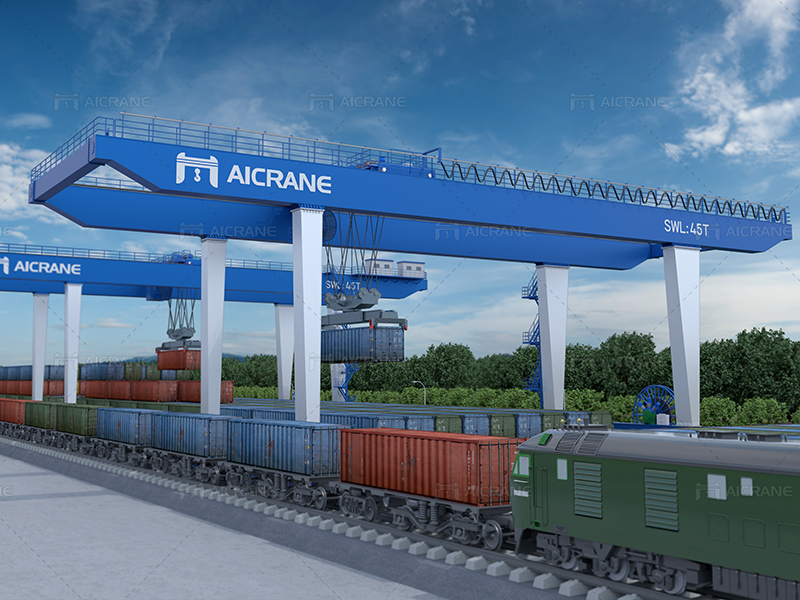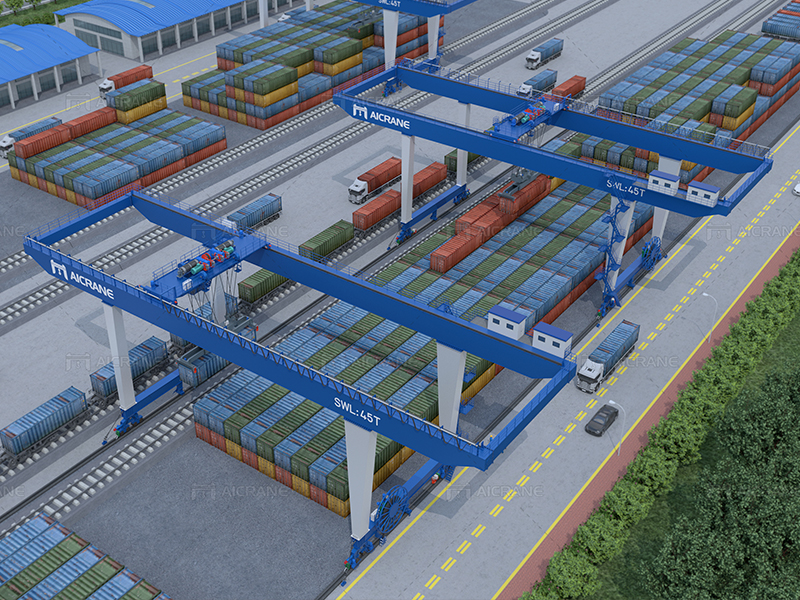Container handling gantry cranes are the backbone of modern shipping terminals, seamlessly managing the movement of containers with efficiency and precision. At the heart of these towering structures lies a crucial element – the container lifting mechanisms. These mechanisms play a pivotal role in ensuring the smooth and secure handling of containers, contributing to the overall effectiveness of port operations.

Understanding Container Lifting Mechanisms:
The container lifting mechanisms in container handling gantry cranes are designed to lift and move containers with varying sizes and weights. These mechanisms are engineered to withstand heavy loads while maintaining precision and control throughout the lifting process. Let’s delve into the key aspects of these mechanisms.
Hoisting Systems:
- The hoisting system is the core element responsible for lifting containers vertically. It typically consists of a powerful winch or hoist, wire ropes, and a spreader beam.
- Wire ropes are meticulously designed for strength and durability, ensuring they can handle the immense weight of loaded containers. These ropes are wound around a drum in the hoist, providing the necessary lifting force.
Spreader Beams:
- Spreader beams are critical components that secure the container during lifting. They come in various configurations to accommodate different container sizes and types.
- The spreader beam attaches to the container’s top corners, ensuring a balanced and stable lift. This balance is crucial for preventing sway during movement, enhancing safety and operational efficiency.
Telescopic Spreaders:
Some gantry cranes are equipped with telescopic spreaders, allowing them to adjust the spread width based on the container’s size. This feature adds flexibility to the lifting process, accommodating diverse container dimensions.
Twistlocks and Corner Castings:
- Twistlocks are mechanisms that secure the spreader beam to the container’s corner castings. These locks ensure a tight grip, preventing any accidental disengagement during lifting and transport.
- Corner castings on containers serve as standardized attachment points, facilitating a seamless connection between the container and the lifting mechanism.

Operational Precision and Control:
The efficiency of container lifting mechanisms lies in their ability to provide precise and controlled movements. Gantry crane operators utilize advanced control systems to ensure accuracy during the lifting and positioning of containers.
Load-Sensing Technology:
- Load sensors integrated into the lifting mechanisms enable real-time monitoring of the container’s weight. This data is crucial for maintaining safe lifting parameters and preventing overloading.
Automated Positioning Systems:
- Gantry cranes often employ automated positioning systems that use sensors and cameras to guide the container to its designated location. This minimizes the margin for error and enhances operational speed.
Safety Measures:
- Safety is paramount in container handling operations, and container lifting mechanisms are designed with multiple safety features to mitigate risks.
Anti-Sway Systems:
- Anti-sway systems counteract the natural swaying motion of containers during lifting. These systems employ advanced algorithms to minimize sway, ensuring a more controlled and stable lift.
Emergency Braking Systems:
In the event of a malfunction or emergency, gantry cranes are equipped with emergency braking systems that can halt operations immediately. These systems contribute to the overall safety of the lifting process.
Conclusion:
Container lifting mechanisms in RMG gantry cranes are engineering marvels that combine strength, precision, and advanced technology. As global trade continues to grow, these mechanisms will play an increasingly vital role in expediting container movements at ports worldwide. The continuous evolution of lifting mechanisms reflects the commitment of the industry to enhance efficiency, safety, and sustainability in container handling operations.
